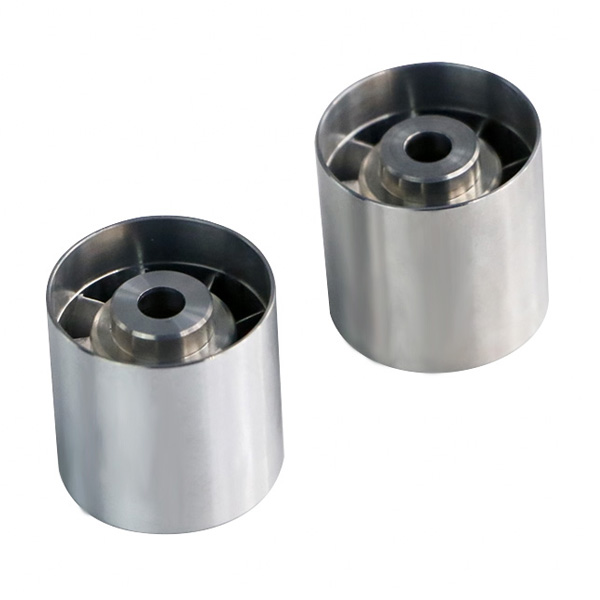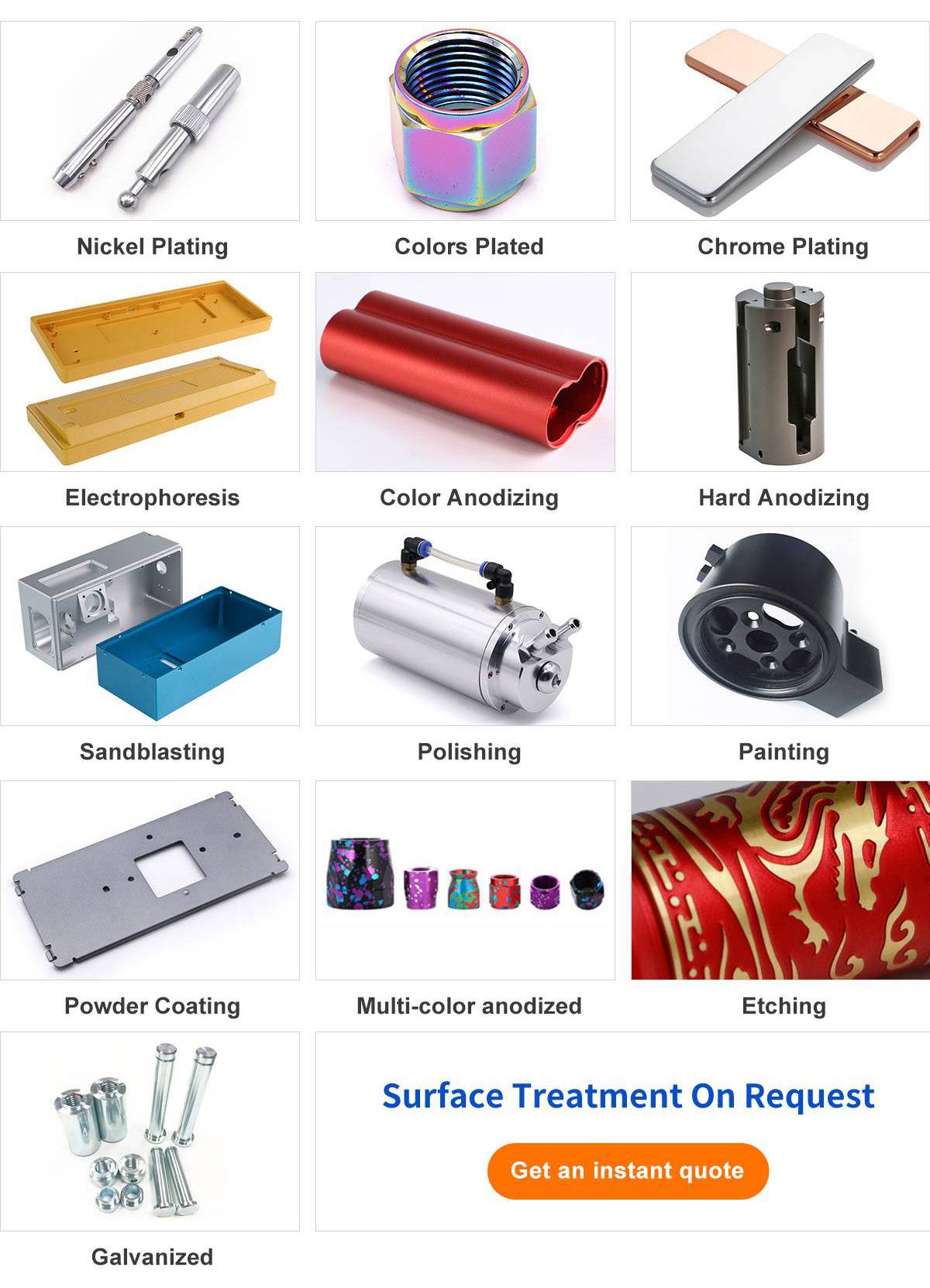15 years one-stop China custom CNC machining parts factory

Hey there I’m VMT Sam!
With 25 years of CNC machining experience we are committed to helping clients overcome 10000 complex part-processing challenges all to contribute to a better life through intelligent manufacturing. Contact us now
 156 |
Published by VMT at May 31 2024
156 |
Published by VMT at May 31 2024
I. Die Casting
What is Die Casting?
Die casting, also known as pressure casting, is a metalworking process that involves injecting molten or semi-molten metal into a mold cavity under high pressure, allowing it to solidify rapidly under pressure. This process is widely used for producing various metal parts, especially those with complex shapes and thin walls.

Process: Steps Involved in Die Casting
The die casting process primarily includes the following steps:
Mold Preparation: Designing and manufacturing molds based on product requirements.
Alloy Heating: Heating the metal or alloy to a molten or semi-molten state.
Alloy Injection: Injecting the molten or semi-molten metal into the mold cavity under high pressure.
Cooling and Solidification: The metal rapidly cools and solidifies under pressure in the mold.
Ejection and Post-Machining: The solidified casting is removed from the mold and undergoes necessary post-processing, such as deburring and heat treatment.
Advantages of Die Casting
High Product Quality: Die cast parts have smooth surfaces, high dimensional accuracy, dense internal structures, and excellent mechanical properties.
High Production Efficiency: Die casting allows for rapid filling and solidification, leading to high production efficiency.
High Material Utilization: Die casting can fully utilize molten metal, reducing material waste.
Suitable for Complex Shapes: Die casting can produce parts with various complex shapes and thin walls.
Disadvantages of Die Casting
High Mold Cost: Die casting molds are complex and expensive to manufacture.
Limited Material Suitability: Die casting is mainly suitable for metals and alloys with lower melting points.
High Material Requirements: Die casting requires high purity and specific chemical composition of materials.
II. Injection Molding
What is Injection Molding?
Injection molding is a process that involves injecting molten plastic into a mold cavity using an injection molding machine, then cooling and ejecting the plastic product. This process is widely used for producing plastic products.
Process: Steps Involved in Injection Molding
The injection molding process primarily includes the following steps:
Plastic Heating: Heating plastic pellets to a molten state.
Plastic Injection: Injecting the molten plastic into the mold cavity under high pressure.
Cooling and Solidification: The plastic cools and solidifies under pressure in the mold.
Ejection and Post-Processing: The solidified plastic product is removed from the mold and undergoes necessary post-processing, such as deburring and trimming.
Advantages of Injection Molding
High Product Precision: Injection molding can produce plastic products with high dimensional accuracy and smooth surfaces.
High Production Efficiency: Injection molding allows for rapid filling and solidification, leading to high production efficiency.
Wide Range of Applications: Injection molding is suitable for forming various thermoplastic plastics.
High Degree of Automation: Injection molding equipment can easily achieve automated production.
Disadvantages of Injection Molding
High Mold Cost: Injection molds are complex and expensive to manufacture.
Limited Plastic Material Selection: Injection molding is primarily suitable for forming thermoplastic plastics.
High Equipment Requirements: Injection molding equipment requires high precision and stability.
III. Comparison Between Die Casting and Injection Molding
Process Capabilities
Die casting is suitable for forming metals and alloys and can produce parts with complex shapes and thin walls. Injection molding, on the other hand, is mainly suitable for forming thermoplastic plastics and can produce plastic products of various shapes and structures.
Precision and Tolerances
Die cast parts have high dimensional accuracy and smooth surfaces but generally have a wider tolerance range. Injection molded products also have high dimensional accuracy and smooth surfaces, with a narrower tolerance range.
Die casting is primarily suitable for metals and alloys with lower melting points. Injection molding is primarily suitable for various thermoplastic plastics.

Die cast parts can undergo various surface treatments, such as sandblasting, painting, and electroplating. Injection molded products can also undergo surface treatments, but the options are relatively fewer.

Application Differences
Die casting is widely used in automotive, electronics, communications, and aerospace industries. Injection molding is widely used in household appliances, toys, packaging, and other fields.
Mold and Manufacturing Costs
Both die casting and injection molding molds are complex and expensive to manufacture. However, due to the higher precision and surface quality requirements of die cast parts, die casting molds need higher precision and stability, resulting in higher costs.
IV. Comparison of Die Casting and Injection Molding Molds
Die casting and injection molding molds differ significantly in structure, materials, and manufacturing processes. Die casting molds need to withstand higher pressures and temperatures, requiring higher material standards and more complex structures. Injection molding molds, however, mainly focus on the flow and molding of plastics, with relatively lower material requirements.
V. Which Process is Right for You: Die Casting or Injection Molding?
Choosing between die casting and injection molding requires a comprehensive consideration of factors such as product material, shape, dimensional accuracy, production volume, and cost. For metal and alloy products, die casting offers significant advantages. For plastic products, injection molding is the preferred process.
VI. VMT - Leading Provider of Die Casting and Injection Molding Services
As a professional CNC machining parts manufacturer, VMT offers advanced die casting and injection molding equipment and an experienced technical team. We are committed to providing high-quality die cast and injection molded CNC machined parts, meeting various complex shape and size requirements.
Our die casting services cover the entire process from mold design and manufacturing to die casting production. We use advanced die casting technology and equipment to ensure product dimensional accuracy and surface quality. Additionally, we offer a variety of post-processing services, such as painting and electroplating, to meet customers' specific needs.
In injection molding, we have advanced injection molding equipment and precise mold manufacturing technology. We focus on optimizing the injection molding process to ensure that plastic products meet the highest standards of dimensional accuracy and surface quality. Our injection molded products are widely used in household appliances, toys, packaging, and other fields, earning wide acclaim from customers.

VII. Conclusion
Die casting and injection molding are two common molding processes, each with unique advantages and applicable ranges. When choosing the right process, it is essential to consider product material, shape, dimensional accuracy, production volume, and cost. As a leading provider of die casting and injection molding services, VMT offers professional technical support and high-quality services to ensure your products meet the highest quality standards.
VIII. Common Questions About Die Casting and Injection Molding
What are the common defects in die cast parts?
Common defects in die cast parts include shrinkage cavities, porosity, inclusions, and cracks. These defects may be related to material quality, mold design, and die casting process parameters. To avoid these defects, it is crucial to strictly control material quality, optimize mold design, and adjust die casting process parameters.
How to control temperature during the injection molding process?
Temperature control is vital for the quality and performance of injection molded products. It is essential to control barrel temperature, mold temperature, and injection speed to ensure the plastic is within the appropriate temperature range during injection. Proper temperature control can reduce defects such as warping and cracking.
How to choose the right material for die casting or injection molding?
Choosing the right material for die casting or injection molding requires considering product requirements, cost, and material processability. For die cast parts, selecting metals or alloys with low melting points and good flowability is necessary. For injection molded products, selecting thermoplastic plastics with excellent processing and physical properties is crucial. Consulting professional materials engineers or suppliers is recommended when selecting materials.
How to extend the lifespan of die casting and injection molding molds?
The lifespan of die casting and injection molding molds is influenced by various factors, including material selection, design structure, manufacturing process, and maintenance. To extend mold lifespan, it is essential to use high-quality materials, design reasonable structures, adopt advanced processing technologies, and perform regular maintenance. Properly controlling mold usage conditions, such as temperature, pressure, and speed, can also effectively extend mold lifespan.
By addressing these common questions, we hope to help you gain a deeper understanding of die casting and injection molding processes and their common issues. If you have any questions or need further technical support, please feel free to contact VMT's professional team.
Ready To Start Your Next Project?
Get Instant Quote

Request a Free Quote
Send us a message if you have any questions or request a quote. We will get back to you ASAP!